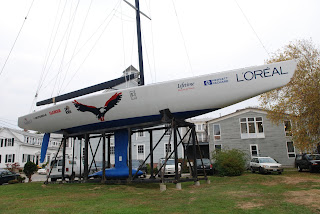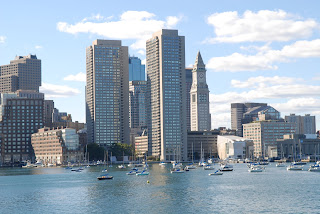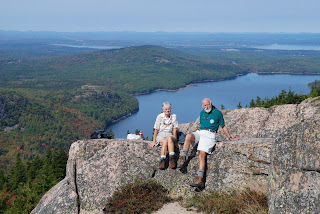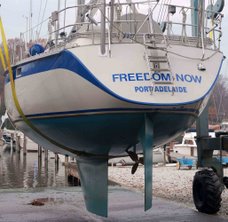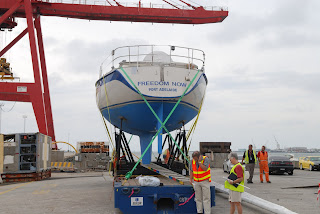

Freedom Now arrived safely in Melbourne on January 22 and we were able to visit her (under escort) on the dock. We accompanied the Australian Quarantine Service officer on his inspection and were told in rigid tones "The boat can't be moved from the dock until it has been fumigated". It was another 4 weeks before we saw her again. Our agent arranged for a company to carry out the fumigation. They erected a tent over her but before the fumigation could be completed the tent was shredded in a storm. The fumigation company could not complete the work for another week. They probably had to get a new tent made. Then the trucking company claimed they couldn't move it without a wide load permit and the bureaucratic wheels that issue such permits could take another week to turn.
Feb 18, the boat arrived by truck at the Sandringham Yacht Club and we were able to start work putting her back together. We worked from sunrise to sunset and finally got her in the water and the mast stepped on Feb 29. The facilities at the club were excellent and the staff very helpful.
We still had a lot of work to do and we were not ready to sail away until March 12. The frustrating delays enabled us to take advantage of some of Melbourne's cultural events and we enjoyed catching up with some long term friends, the Coulsons from Alice Springs days and the Rose family, involved in Churches of Christ Ministry.
Our sail from Melbourne to Adelaide was one of our best. We left Sandringham early in the morning to arrive at "the rip" at slack water. Port Philip Bay is a huge volume of water with a narrow opening to Bass Strait. This means the outflow and inflow never ever get synchronised with the tides. The resulting disturbed water at the heads known as "The Rip" can result in ugly conditions. We made good time and arrived about 30 minutes before slack water. We decided to take advantage of the 3knot outflow current but were amazed at the disturbed water we experienced so close to the time of slack water. We sailed through the night around Cape Otway arriving at picturesque Port Fairy the next day. Staying in Port Fairy is always a delight. We tied up to the dock in front of Gary the boat builders house in the Moyne River with a constant stream of visitors walking along the dock between the fishing boats, yachts and houses. It is the closest thing to a small English fishing village we have experienced. Many of the dock wanderers stop for a chat and just a few minutes walk from the boat are some of the finest cafes, restaurants and bakeries we have experienced. It was hard to leave but the weather was changing and we needed to get home. Our course was mainly NW and a series of cold fronts sandwiched between high pressure centres meant the forecasts were for winds to be NW at 30 knots ahead of the fronts. Beating into 30knots is not high on our list of delights. One front passed late on Monday afternoon and the next was due on Thursday afternoon. We left at 2300h Monday evening, carefully winding our way out of the Moyne River. Conditions were good with a swell of about 3 metres and winds SW up to 25knots so that once we had passed Portland we were able to free sheets and romp along.
Winds moderated and backed further East the further we went. By Wednesday evening we were in Backstairs Passage and once in the lee of Kangaroo Island and out of the swell the seas flattened out nicely. We rounded Cape Jervis and started heading up the home stretch of Gulf St Vincent just before dark. The winds were light and our boat speed sometimes dropped to 3 knots but we could see no point in hurrying so we took it in turns having a restful sleep and watching with nostalgia as the lights of our home city floated by in the distance. We tied up at the Royal South Australian Yacht Squadron at 0530 Thursday 20, March (Maundy Thursday) and slept for a few hours before travelling by train to our home at Blackwood. Freedom Now seemed quite happy in her new home and we were content to be close to family again. The memories of the places we have been and the many friends we have met will be treasured and recalled for as long as we live. What wonderful things we have been able to achieve. What wonderful experiences we have been able to share. It is a wonderful world! Farewell for now faithful readers.

